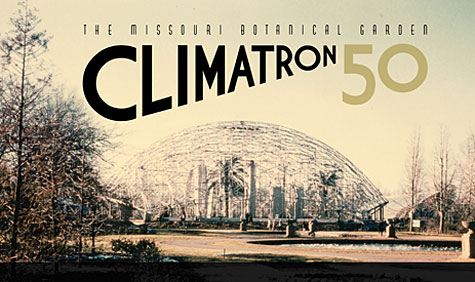
A new book, “The Missouri Botanical Garden Climatron: A Celebration of 50 Years,” by Eric Mumford, Ph.D., professor of architecture in the Sam Fox School of Design & Visual Arts at Washington University in St. Louis, chronicles the history and significance of the St. Louis landmark. In 1976, the Climatron was named one of the most important buildings in American architectural history by the American Institute of Architects.
Since its creation in 1960, the Climatron has introduced tourists and generations of St. Louisans to the wonders of botany. Although originally intended as a plant research center, the R. Buckminster Fuller-inspired geodesic dome quickly became a favorite destination, enabling visitors to get up close and personal with rare tropical plants in a simulated rainforest environment. And the crowds never stopped coming.
Mumford is an expert on the history of modern architecture and author of “Modern Architecture in St. Louis: Washington University and postwar American architecture, 1948-1973.” In a recent interview in the St. Louis Beacon, Mumford discussed the role of Fuller’s design principles on modern architecture, especially in mid-20th century St. Louis.
“He’s certainly associated with this period of St. Louis architectural history when there was a very ambitious effort to modernize the city,” Mumford said. “It’s around the time when the Arch was built and when the airport’s main terminal was constructed. In most cases, that vision of remaking St. Louis into a modernist city didn’t work out well, but things like the Arch and the Climatron were successful parts of this movement.
“There’s lots of interest in Fuller’s work lately, and especially his ideas about prefabrication. I wouldn’t say that people are reviving his work, but his concept was widely applied in the 1950s and 1960s. Lots of concert halls, zoo structures and other venues are built in a way that borrows from Fuller’s ideas. There was also a popular dome home movement inspired by his work and his own house in Carbondale, Ill.”
Published by the Missouri Botanical Garden Press, the book contains colorful archival photos — including a number of 3-D images — as well as historical information about the dome provided by Mumford and a foreword by long-time Missouri Botanical Garden president Peter H. Raven, Ph.D., the Engelmann Professor of Botany in Arts & Sciences.
To read the full article in the St. Louis Beacon, visit stlbeacon.org/content/view/14507/171.